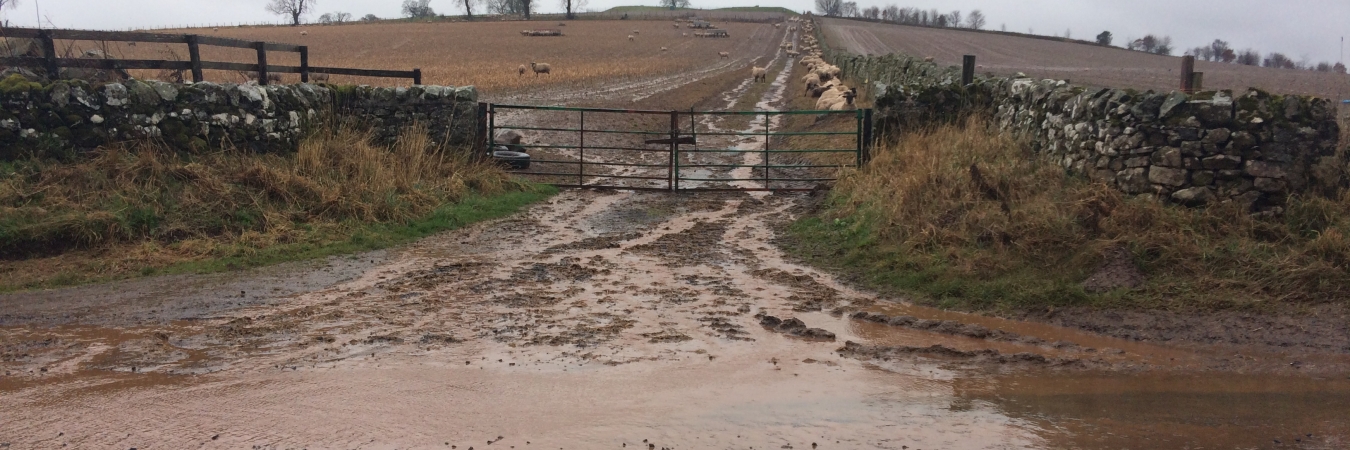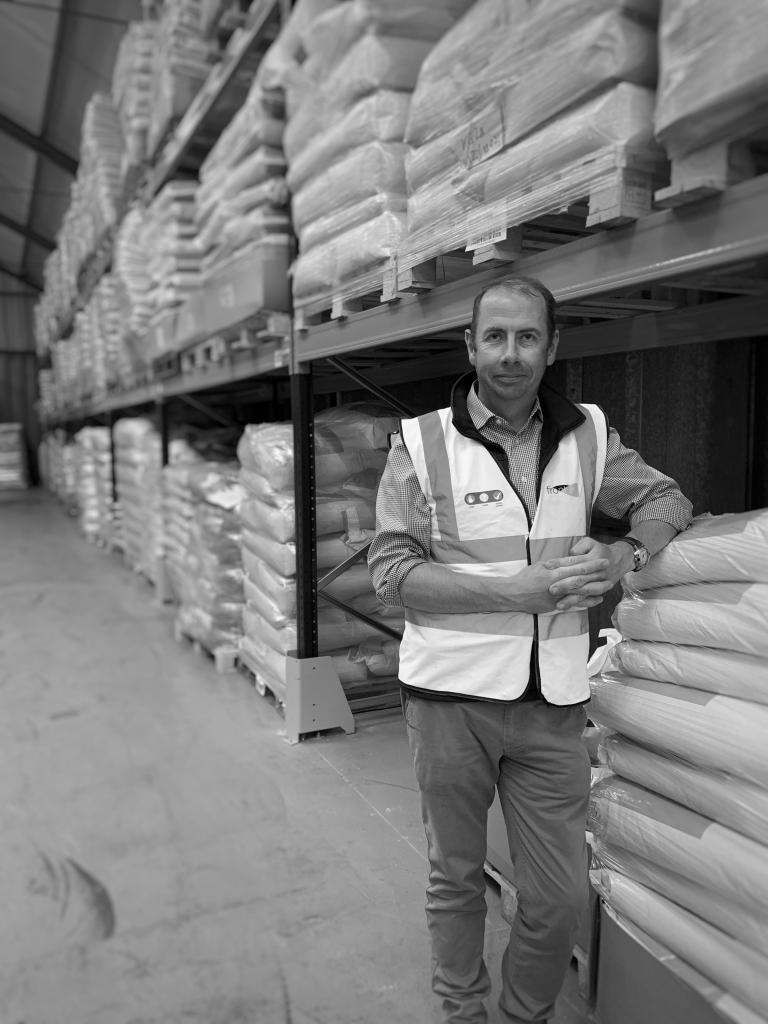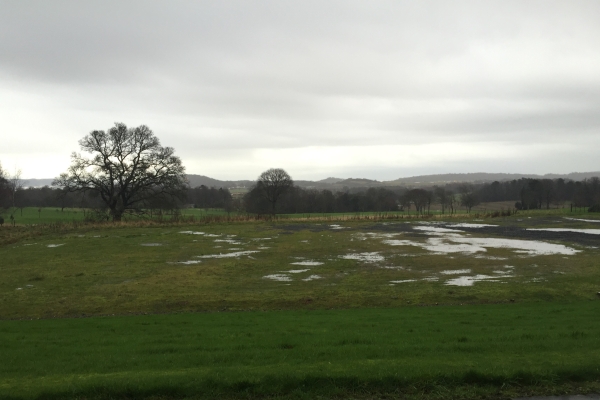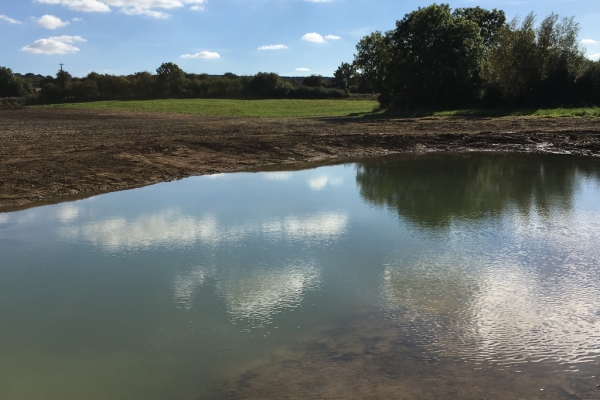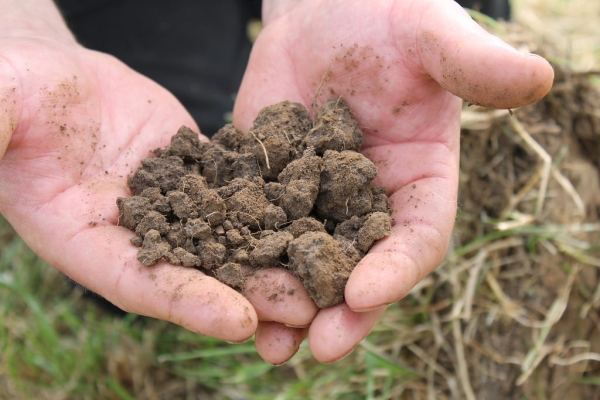Waterlogged soil and cropping options – the route to recovery
First and foremost, as we all pull together to navigate the challenges presented to us as a result of the coronavirus pandemic, I hope you are able to find the time to take care of yourself. The growing season has, without a doubt, already presented us with some significant challenges and, while recent government advice has altered the way that the Kings team is communicating with customers, we are still very much available to offer technical advice and recommendations to support your crop strategy and wider business.
Turning to conditions in the field, over recent months – from growers to advisors – we have all been doing our very best when it comes to taking an optimistic view; crossing our fingers for improved weather conditions. Each break in the rain has been seen as a chink of light in what has been otherwise a torrid autumn (and challenging spring so far) when it comes to harvesting and planting progress.
Thankfully, favourable weather in some areas has gone on to improve conditions significantly, with some growers able to drill their spring crops. However, in regions that suffered substantial damage or flooding from the prolonged rain, growers are facing some tough decisions as land previously allocated to autumn-sown crops remains unplanted. The legacy most likely is that late harvested root crops will have seen seriously damaged soils on headlands and at gateways due to machinery traffic. Flooded soils will be in need of a significant period of recovery, which may take upwards of a year in some cases. These unplanted areas could certainly benefit from a decent period of drier weather but, even then, the headlands and certain areas in-field may need to be left to fully dry out.
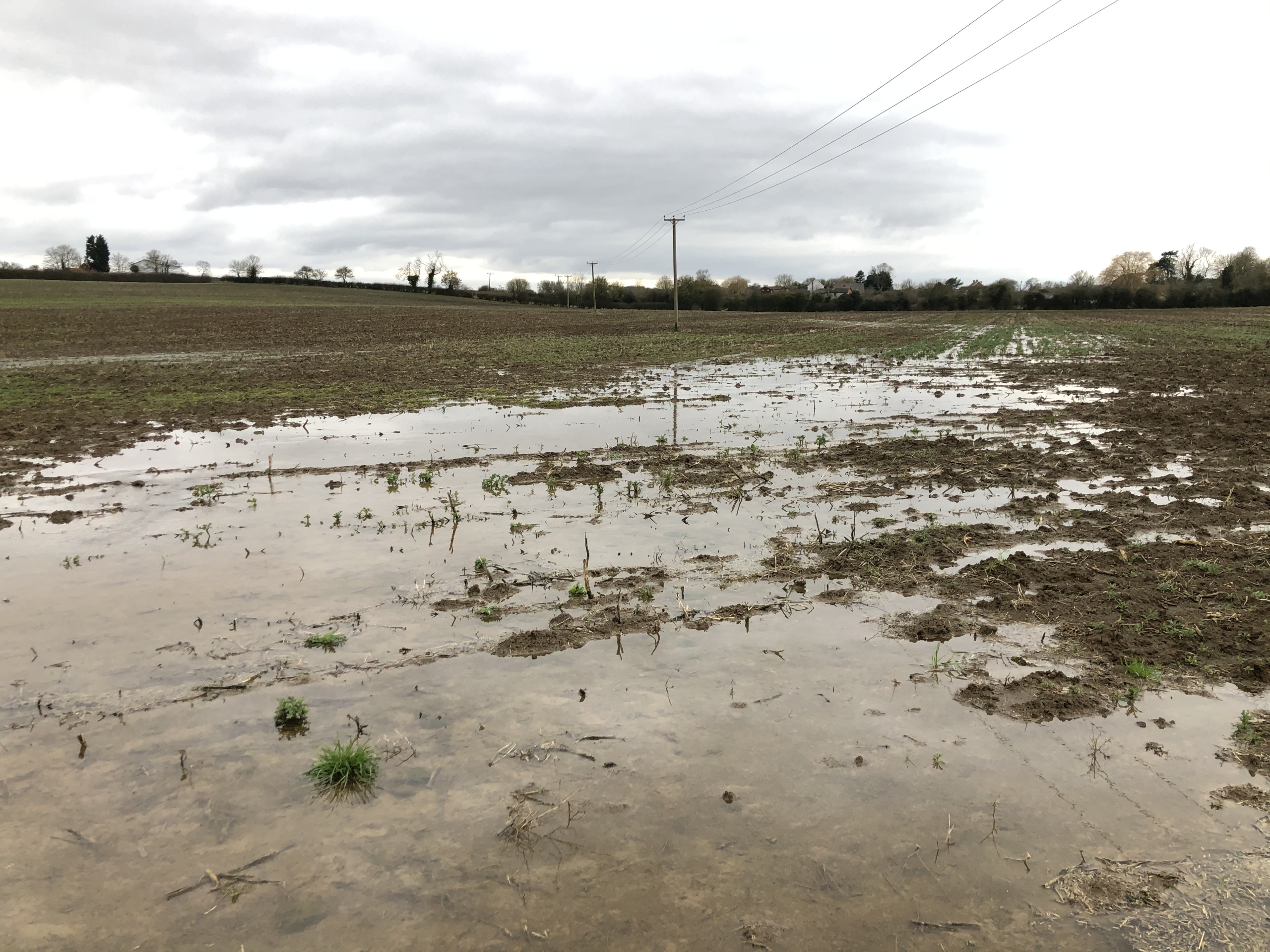
With all this in mind, it is without doubt that our collective priority is to ensure that land is planted up with crops that can be harvested in the summer. Your financial, physical, mental and soil health absolutely need this to be the case.
It is worth giving some consideration to the options available to you; given that you may find that not all your land is fit for spring planting or have identified areas that need another strategy. I have set out some options below to consider, highlighting some Kings Crops seed mixes and other useful information you can refer to.
Information gathering
Accepting that a field or field parcel is still waterlogged now is one thing, but consider this – how did it perform when we had the extremely dry weather early last year and over recent years in general? Can you afford for a challenging piece of land to underperform three years out of every five? Using digital tools in the field such as iSOYLscout will help you identify key features and areas of interest. You can then add further information layers when back in the office, using the MySOYL platform to layer yield, biomass, soil type and nutrient indices to give a clear, fact-based view on performance.
Ask yourself: “Which crop delivers the most consistent and profitable margin for me?” Of course in most cases this will be a cash crop, but by using technology such as this margin tool you will no doubt be surprised to see areas of the field that are consistently breaking even or making a loss, despite your best efforts to improve this position. Now is a good time to take a detailed look at performance based on data, and make some clear decisions on what to do going forward.
Taking all of this into consideration, are you looking for a short term, medium term or long term resolution for headlands, parcels, whole fields or blocks of land? You must be clear over what period of time you wish the remedial crop to be in the ground for as this affects option choice.
Short term – cover crops
Where land remains ‘uncropped’ for a period of time, leaving it without any ground cover for the spring/summer will be a backward step in terms of soil structure, soil health and potential loss of nutrients. Careful selection of a cover crop will help with soil re-structuring in addition to retaining and recycling available nutrients (make sure that you consider any herbicides that may have been applied to a previous crop before you select options). Legumes such as vetch, crimson clover and berseem clover will contribute by fixing atmospheric nitrogen – allow a minimum of 12 weeks for effective nodulation.
In all likelihood, the earliest entry point will be from late April onwards when spring drilling will be drawing to a conclusion (hopefully!) and a clearer view of land that isn’t fit for planting is identified.
Be mindful that planting a short term cover crop utilising, for example; mustard, phacelia or radish in late spring, will see it reaching its optimum growth by late June. Leave it any longer and you will see a lignified, seed-bearing crop that will be difficult to incorporate and full of unwelcome volunteer seed potential. Taking the right advice on managing these crops is absolutely critical.
Up to 3 months (e.g. June to August):
- Recovering soil structure – Soil Structure Mix
- Improving general structure and supporting soil health – Soil Vitality Mix
- Low cost quick fix – straights such as mustard or phacelia will help to keep costs down but do take advice from your local Kings advisor as considerations need to be made on soil type and the impact on rotation etc.
3 months – 6 months (e.g. April – August):
Consider an option that contains legumes such as our Annual Nectar Flower Mix (a range of annual and perennial clovers) – this will fix atmospheric nitrogen, help improve soil structure and trap nutrients. Additionally, it can offer great benefits to pollinators which, on a field scale, will have a hugely positive impact to your other crops and the wider farmed environment.

If you are going to fallow, consider the period of time you wish the crop to be in the ground for: Short term (3 months) – you could consider spring rye, phacelia, vetch, oil radish, buckwheat, and mustard. A medium term (3-6 months) option is to use a soil structure mix – crimson, berseem, red clovers, wholecrop (arable silage). Longer term (6-36 months) – ryegrass/legume, herb-rich leys, red clover and westerwold annual ryegrass for cutting or grazing use.

Forage crops
Looking at forage options in the spring – these can be planted from the end of March onwards without issues seen with short term cover crops. Sowing a westerwolds/Italian ryegrass blend; a grazing rye or stubble turnips early on in the season may be a popular option. With the lack of winter cereals in the ground there may well be a shortage of straw for next winter; a call for both forage and crops that have a high straw yield such as rye may provide additional revenue opportunities.
Ecological focus area (EFAs)
Make the most of the EFA and greening rules – get Basic Payment forms filled out in May – and use the Soil Structure Mix or Short Term Fallow Mix within the EFA Fallow option. As of 20th March, the Government announced plans to relax the three-crop rule and make more funding available to help farmers recover from flood damage seen earlier in the year, with the Environment Secretary, George Eustice, acknowledging that the traditional rules were not practical at this time. If more than 75% of your farm is a mixture of permanent pasture, temporary grass and fallow land, you will be exempt from crop diversification requirements.
Consider how headlands could be allocated to the Fallow option. Don’t forget you can drive and turn on them so why not take the marginal headlands out and get an EFA benefit from them? Equally look at how you can buffer watercourses or protect slopes from soil erosion.
Planting these with a grass mix with some pollen and nectar or wildflower inclusion will look good, deliver for pollinators and won’t cost you a fortune. “But I will be driving all over it – what is the point of flowers?” I hear you ask. Well, you won’t be driving over every single inch of these areas and the diversity created by wheelings only brings further environmental benefits.
Countryside Stewardship (England only)
Before I go any further let me get the elephant out of the room. Yes, we know the payments are slow and the paperwork has been challenging. That said, did you know that it will most likely be another 4 years at least before we see the new Environmental Land Management Scheme (ELMS)? Countryside Stewardship (CS) is available for applications in 2020. Can you afford to leave unproductive land outside of a stewardship scheme and not get any financial revenue for it for at least 3-4 years?
Now is absolutely the right time to take CS seriously. If the agri-environment bus stops at your farm drive – get on it. Don’t watch it drive by and miss excellent opportunities to enhance your farm’s bottom line as well as its environment.
Looking to CS can help you minimise the financial impact of managing these difficult areas in future. You need to assess which parcels of land are consistently challenging in terms of seasonal restrictions, weed burden, potential yield and damage to soils and water.
Placing these areas into CS options such as a Legume Herb Sward Mix (£309/ha and can be grazed), Two Year Legume Fallow (£522/ha) and Flower Rich Margins (£539/ha) can offer a guaranteed reliable income over five years regardless of what the weather throws at you, whilst improving some of the challenges listed above.
CS applications are now open for agreement start dates in 2021. Assess your unproductive land and consider what will be the most effective way of utilising it going forward.
Some land may well require a short term solution to get you to the next cropping year and back into your rotation, whilst others may well provide the nudge to seek alternative revenue streams.
Spring cover crop options for wet soils

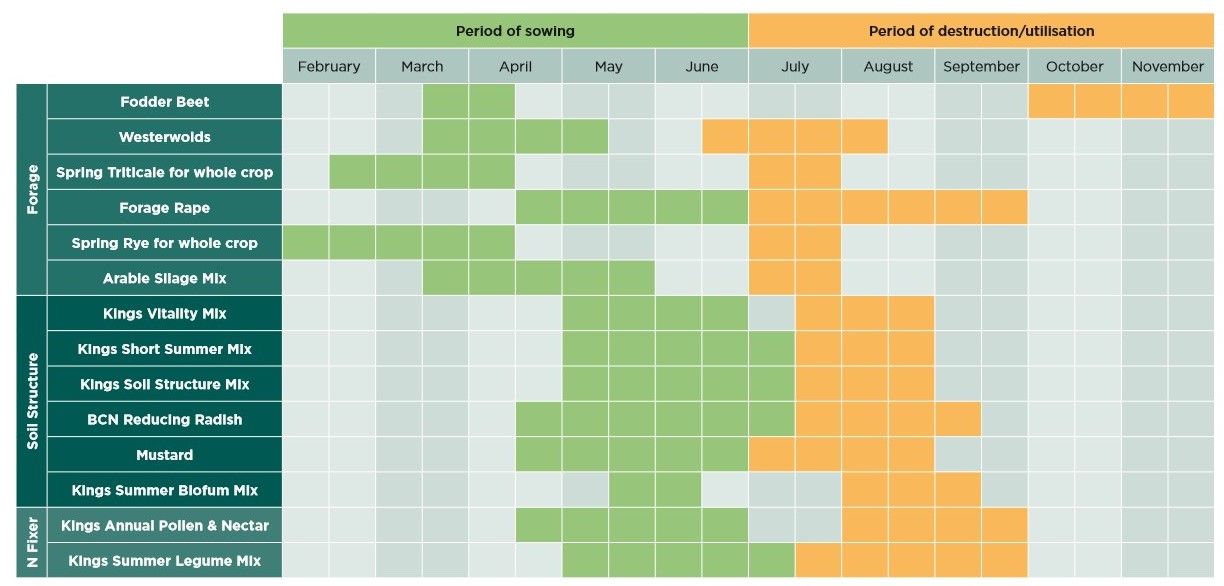
Richard Barnes
After completing a degree in Agriculture and Land Management at the Royal Agricultural University, Kings sales manager, Richard Barnes, spent a valuable 2 years working on farms and estates across the UK before spending 6 years as a gamekeeper in Kent and the Cotswolds. Here, Richard oversaw the management of a partridge and pheasant shoot, whereby a core element of his role was to develop the habitat on farm. This included incorporating a range of game cover crops totalling 50 acres, which Richard established and managed himself.
In 2004, Richard joined Kings Crops where he quickly moved to the position of sales manager. He has since gone on to oversee significant growth within the business, now managing a team of 11 advisory staff who supply seed and advice to a range of landowners, farmers, conservation bodies and wider industry stakeholders across the UK. The Kings advisory team maintains strong emphasis on delivering innovation and, where possible, supports and encourages the integration of sporting interests within agri-environment schemes/Ecological Focus Area requirements. Kings is a key partner to the Allerton Project, Loddington, and works closely with the Game and Wildlife Conservation Trust’s Balgonie grey partridge and Auchnerran demonstration farm projects in Scotland.
All images courtesy of Kings Crops. All Rights Reserved
